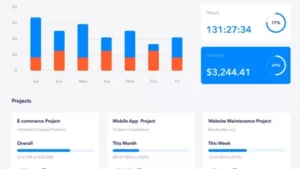The Employee Engagement Survey has long been used to varying levels of success. This is largely down to 2 elements:
1. How well the data analysts turn perception based data into insightful strategic action.
2. How quickly and relevantly the organisation follows up the survey with some form of action.
In all honesty, the act of interpreting perception based data can be more art than science – even though there are of course solid scientific methodologies for the practice. The art element is really utilising the scientific methodologies to interpret the data, and then using experience to interpret what that perception is revealing about the realities of the organisation, and how that is strategically relevant.
It is important, however, to keep front of mind that data yielded from surveys is perception based, and should not be taken at face value only. Perception is not fact. Perception is simply how the respondents on average view aspects of the organisation. The balancing act is ensuring that you attribute the appropriate weighting and significance to the perception based data, and use it to build a balanced, considered and full view of the context.
For example, we worked with an organisation who undertook a staff survey which indicated that staff wanted to be communicated with more openly. The organisation took this at face value, and implemented a detailed communication program. However, upon the subsequent pulse survey it became apparent that staff were actually less happy than previously about the communication level. Upon further investigation it became apparent that what staff meant when they said they wanted to be communicated with more openly was that wanted access to highly confidential information, and they wanted to make key decisions. This result actually said much more about role clarity than it did about the communication.
Another thing to bear in mind with perception based data is just because your staff, customers, or other survey participants express a certain point of view, it is important not to take this as a directive for change. This data is simply one consideration when weighing up a decision. There will be some things expressed by customers for example which do not translate into more positive outcomes for either the organisation or the customer. This is because the customer doesn’t know what effect changes would have on the organisation as a whole. It is the organisations job to properly vet this.
Equally, a staff survey is very important for identifying areas of concern and strength within the workforce, however the people surveyed will not have all the information required to make a decision. Often, the survey data will more inform communication, training and engagement activities required to enrol staff in the strategic journey of the organisation, rather than in and of itself forming the strategy. This is equally true of customer surveys.
Perception data finds its strength and value when compared and correlated with other quantitative data. I cannot stress enough the importance of recognising perception based data as only one piece (albeit a very important piece) in the data narrative puzzle.
A final word of caution on interpreting perceptions. It is important to ensure that you are measuring sentiment and not mood. Mood is transient and not terribly relevant to strategy. Sentiment however is a very important piece of data. When collecting perception based data you need to ensure that you are providing a vehicle for reflective feedback – where the respondent considers their point of view and how they would like to articulate it. Where feedback is taken in a quick collection without time or guidance for reflection provided you will tend to be measuring the respondent’s mood in that moment, which could be different 5 minutes later.
Finally, just the act of engaging staff, customers and stakeholders to consider their view and evidencing that you want to hear their concerns and that they matter to the organisation is important and valuable. However, this information should not be used in isolation as detailed above, but equally it should not be ignored. If you are not intending to enter into meaningful dialogue with the group you are surveying, you would be better off not surveying them at all. If their opinion doesn’t matter to you, then simply don’t ask for it. Doing a survey and then doing nothing is a very efficient way to lower engagement and create mistrust.


